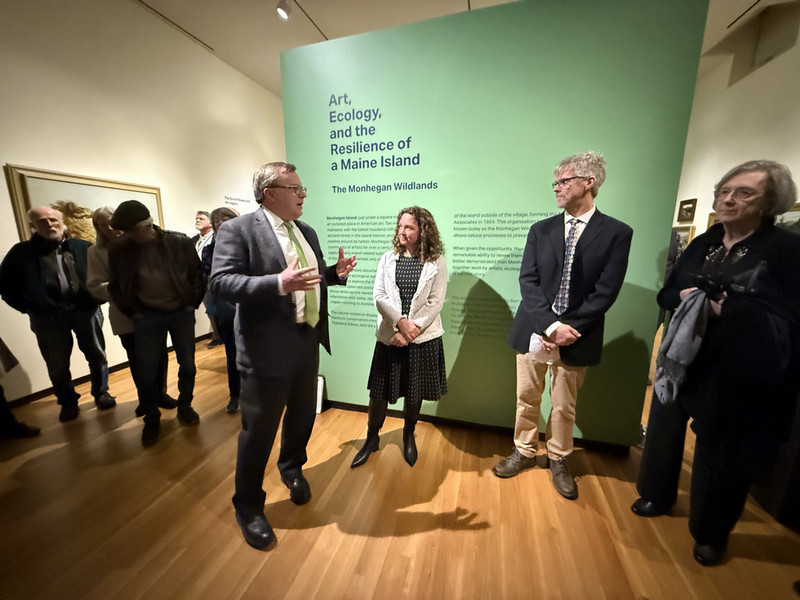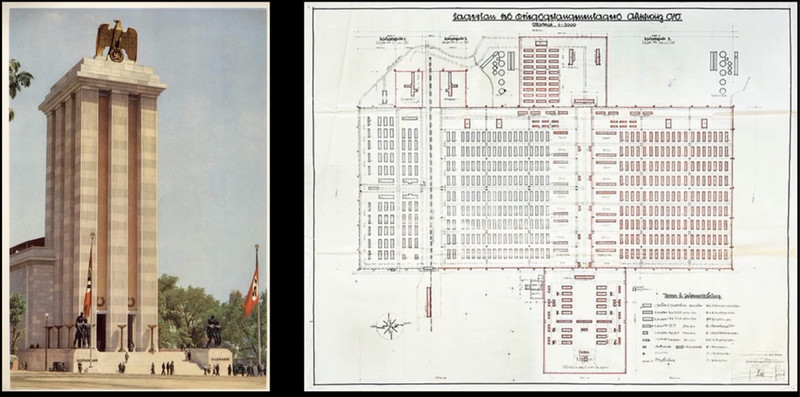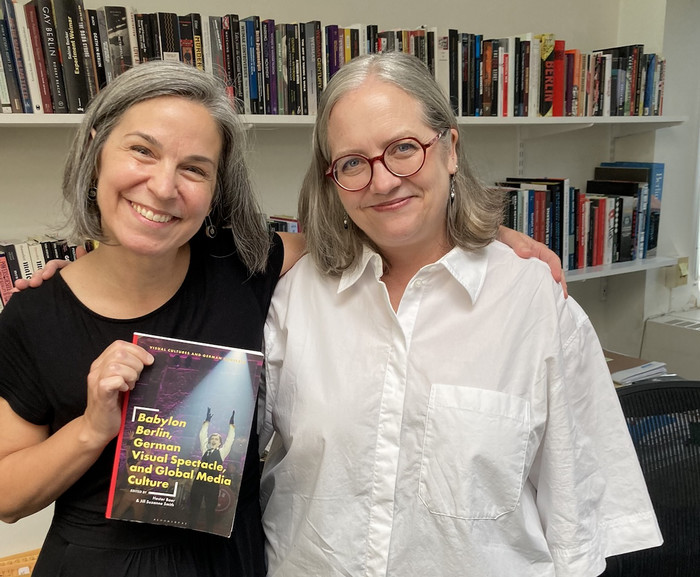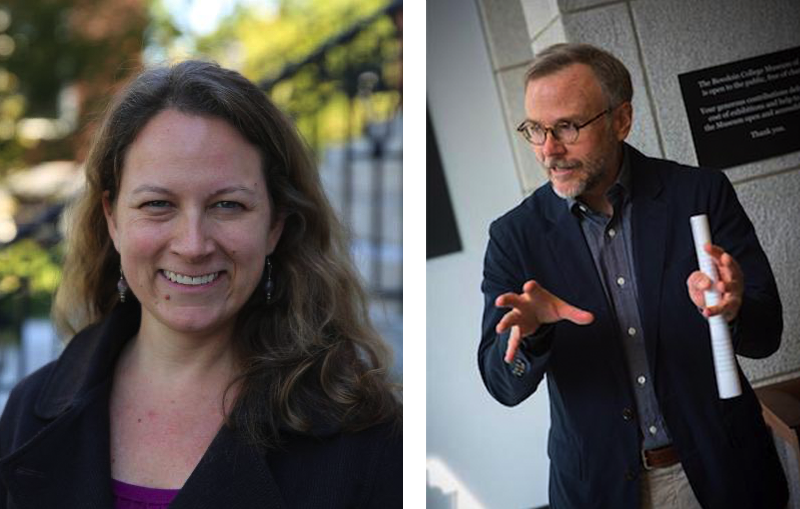Focus on Stephen Perkinson and "The Ivory Mirror: The Art of Mortality in Renaissance Europe"
By Bowdoin College Museum of Art
The opening of The Ivory Mirror: The Art of Mortality in Renaissance Europeon June 24 will bring together objects that reflect Renaissance Europe’s understanding of death. The objects that will be on view provide insight into the macabre imagery that reached its height of popularity in the years around 1500. An in-depth exploration of the visual culture surrounding humanity’s inevitable shared experience of death, The Ivory Mirror presents new scholarship in its investigation of the multi-faceted influences of memento mori themes throughout history.
Honor Wilkinson, the Museum’s curatorial assistant, had the opportunity to speak with the exhibition’s curator, Professor Stephen Perkinson, about the new research he conducted in preparation for the exhibition, as well as what visitors can expect from their visit.
HW: You and the Museum of Art have been working on this groundbreaking exhibition since 2012. What was the impetus for this exhibition?
SP: These memento mori pieces – especially the ivories – are objects I’ve long been interested in, but it was the acquisition of one by the Museum in 2011 that really got me thinking of curating an exhibition that would focus on them.
HW: Many of the works in this exhibition could be categorized as memento mori objects. When did the concept of memento mori arise, and why did it become such a central idea in Renaissance society?
SP: Broadly speaking, this is a concept that is as old as written human culture. It really seems to be one of those issues that has, quite understandably, occupied humans for just about as long as we’ve been around. But in this particular form, it appeared in the fifteenth century – in prayer books, in murals painted on the walls of churches and cemeteries, and in the objects examined in this show. There are many reasons why it was so preoccupying to European society. It was an age that was intimately familiar with death, as mortality rates from disease were terribly high. Yet, the Renaissance witnessed considerable prosperity as well, and these objects helped their owners think through how to make sense of that prosperity – how to balance the pleasures and comforts of life with the need to prepare for one’s own inevitable demise, and what sort of legacy one would want to leave behind.
HW: How was macabre imagery incorporated into everyday life during the Renaissance? How did beliefs about the afterlife become manifest in objects?
SP: This imagery appeared all over the place – in the margins of books, on the walls of churches, in collectable artworks, and even (and perhaps especially) in the rhetoric of authors of the era – preachers in their sermons, poets seeking to weigh questions about the proper balance between morality and pleasure, and so on. But in terms of this exhibition, we’re particularly interested in the category of memento moriobjects that served a kind of dual purpose. On the one hand, they functioned as devotional aids, prompting pious reflection; these could even be utilitarian objects, like prayer beads. But on the other hand, these were also quite often luxury goods – pieces intricately sculpted from exotic material like ivory. As such, they functioned as compelling reminders of the transient nature of earthly pleasures, while also serving as marvelous earthly pleasures in their own right.
HW: How might this exhibition challenge people’s previous perceptions of the Renaissance?
SP: In the popular imagination, the Renaissance was an era of great optimism and progress (and that’s not entirely wrong, although one always has to ask, “optimism and progress for whom?”). These objects, with their eerie imagery, might seem to complicate that picture. And yet they also are paradigmatic Renaissance artworks – intricately and imaginatively designed by master artists, intended to capture the attention of a demanding audience, and yet also devised to prompt contemplation of profound moral and philosophical questions.
HW: In correspondence with the objects discussed in the exhibition catalogue, you will be exhibiting a selection of loaned objects from domestic and international institutions. What are you most looking forward to accomplishing by bringing these objects together in an exhibition for the first time?
SP: Simply seeing this incredible array of objects here at Bowdoin will be really great! But I’m particularly pleased to be reuniting some long-separated relatives, as it were. As part of our research, we were able to piece together the production of particular workshops and, in one case in particular, attach a name to a group of previously anonymous ivories. Bringing a person’s name out of the shadows like that and assembling pieces he made, that might once have been together in his workshop in the early 16thcentury but have been apart ever since, is simply a tremendous thrill.
HW: How do the themes and traditions related to mortality in Renaissance Europe continue to resonate in contemporary life?
SP: We’re a funny culture in many respects when it comes to death. On the one hand, we are incredibly adept at avoiding thinking about it. We still don’t like to confront it, we like to imagine we can stave it off with exercise and medicine and nutrition, and when it’s upon us, we often deal with it in the sanitized spaces of a hospital, rather than in the more familiar and comfortable confines of the home (as was the case in the Renaissance). But on the other hand, it’s a topic that clearly fascinates us. In the realm of fashion, there’ve been a spate of recent cases of fashion designers emblazoning their clothes with memento mori motifs. But at the same time, we’ve been engaged in a serious rethinking of how we deal with death and end-of-life care. Witness the recent “hospice” movement, for instance.
HW: Your catalogue includes an essay written by Maggie Solberg, Assistant Professor of English at Bowdoin, and you have offered a number of seminars on related topics in the years preceding this exhibition. How have students been involved in the process of planning this exhibition, and what are your hopes for cross-departmental academic engagement with this exhibition on the campus this coming fall?
SP: Bowdoin students are fabulous, and they’ve helped me enormously in the course of planning this exhibition. I’ve taught seminars on this topic several times while working on this project, and in each case, the students in those seminars pushed me to clarify my thinking. Most recently, I taught a seminar on this topic, and the students in that class played a significant role in writing labels for the exhibition. More broadly, we’re hoping that this show will be a great example of how an exhibition at the Museum can serve as a catalyst for all sorts of conversations and activities that wouldn’t otherwise happen on campus. To that end, we’re planning a group of classes that will, in varying ways, draw upon the exhibition and the themes that it raises – classes in History, Philosophy, French, and so on. We’re also planning events that will bring students and faculty from across campus together. These include scholarly events like a major international symposium, but also more “social” events like a series of films involving ghosts, zombies, and such. These are opportunities to have some fun while thinking about what these movies tell us about how our own culture thinks about mortality and about the relationships between the living and the dead.
HW: What do you hope the visitors will learn from experiencing this exhibition?
SP: Well, I hope they won’t be alarmed! In fact, having spent a long time thinking about this topic, I’ve found that confronting it and thinking through it is actually quite positive. It gets you thinking about what’s important, how you want to live, what kind of legacy you want to leave behind, and so on. I hope that visitors will have that experience as well. More broadly, I hope they’ll have a chance to discover that the people who made and used these things so long ago – 500 years! – had ideas and enthusiasms that aren’t always so different from our own; or rather, that these people from the past confronted some of the same anxieties and issues we deal with today. Perhaps the ways that they confronted the unavoidable fact of mortality might offer us some ideas that we might apply to our own lives.



